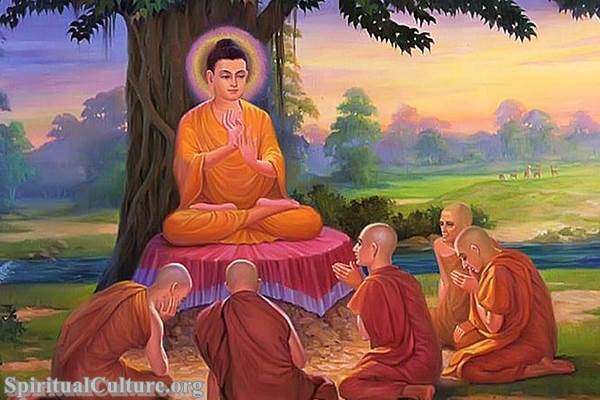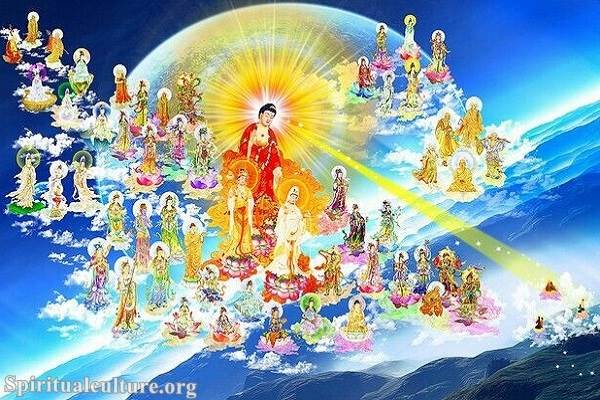The spiritual journey is never meant to be walked alone. Though inner silence and solitary meditation are deeply honored in Buddhist practice, the road to awakening is lined with fellow travelers. In the teachings of the Buddha, the Sangha — the community of practitioners — is not a peripheral concept. It is one of the Three Jewels, the essential pillars of refuge for every Buddhist: the Buddha, the Dharma (teachings), and the Sangha (community).
In a world often fragmented by individualism and isolation, the Sangha offers a spiritual family — a gathering of souls united not by blood, ethnicity, or ideology, but by a shared commitment to awakening. What is the role of this sacred community? Why did the Buddha place such weight on spiritual companionship? And how does the Sangha continue to guide and transform lives today?
As Spiritual Culture, we invite you to explore the profound significance of the Sangha — not just as a religious institution, but as a living expression of compassion, discipline, and liberation.
The Three Jewels: Where Sangha Stands Among the Pillars of Buddhism
The Refuge Formula
When one officially becomes a Buddhist, they recite the Tisarana — the Threefold Refuge:
“I take refuge in the Buddha. I take refuge in the Dharma. I take refuge in the Sangha.”
This is more than ritual. It’s a declaration of spiritual direction. The Sangha, in this trinity, represents the embodied Dharma — those who live the teachings, who encourage others, and who keep the path alive in every generation.
Sangha as a Living Refuge
The Sangha serves as a mirror, a container, and a guide. While the Buddha is the teacher and the Dharma the map, the Sangha is the walking companion. It protects against the distortions of ego, doubt, and discouragement — offering correction through example, encouragement through presence.
The Historical Sangha: The Buddha’s Disciples and Monastic Order
The First Sangha
The earliest Sangha was formed by the Buddha himself — composed of monks (bhikkhus) and later nuns (bhikkhunis) who had renounced worldly life. Their purpose was not just to meditate but to live communally, supporting one another in ethical conduct (sīla), meditation (samādhi), and wisdom (paññā).
“Just as the ocean has but one taste — the taste of salt — so too does the Dhamma have but one taste — the taste of liberation.”
— Udana 5.5
In this ocean of liberation, the Sangha became the vessel.
Vinaya and Discipline
The monastic Sangha follows the Vinaya — a detailed code of conduct given by the Buddha to create harmony and prevent conflict. These rules shape a culture of mutual respect, non-attachment, and intentional simplicity — all supporting the path to Nibbāna.
The Two Types of Sangha: Monastic and Lay
Ariya-Sangha: The Noble Community
In a spiritual sense, the Sangha also refers to the Ariya-Sangha — the noble ones who have reached stages of enlightenment (from stream-enterer to arahant). These are not defined by robes, but by realization. Their life serves as a reminder that liberation is possible.
Bhikkhu-Sangha: The Conventional Monastic Order
The traditional image of the Sangha is monastic — the orange-robed monks of Theravāda, the red-clad scholars of Tibet, or the Zen communities in Japan. Their lives are dedicated to preserving the teachings, guiding laypeople, and serving as an anchor for the broader community.
Lay Sangha: The Householder Path
But the Sangha is not only monastic. In Mahāyāna Buddhism especially, the lay community plays a vital role. Through generosity (dāna), moral practice, and meditation, lay followers cultivate the Dharma in the midst of daily life. Their participation forms a bridge between the monastic ideals and worldly responsibilities.
Why Community Matters: The Buddha’s Teachings on Spiritual Friendship
The Words of the Buddha
Once, the Buddha’s attendant and close friend Ānanda said:
“Venerable sir, spiritual friendship is half the holy life.”
The Buddha corrected him:
“Not so, Ānanda. Not so. Spiritual friendship is the whole of the holy life.”
— Samyutta Nikāya 45.2
This teaching alone underscores the centrality of Sangha. Spiritual friends (kalyāṇa-mitta) are those who remind us of the Dharma, who inspire practice, and who hold us accountable with love.
The Sangha as Mirror
In the Sangha, one cannot hide for long. Pride, laziness, harsh speech — all are gently (or sometimes directly) brought into awareness. In this way, community is a mirror. It reflects what needs to be refined — not to shame, but to transform.
Practical Support: What Sangha Offers in Daily Life
Shared Practice
Group meditation sessions, chanting, Dharma talks — these shared rituals create rhythm and resilience. When motivation wanes, community uplifts. When confusion arises, others help clarify. Practice becomes not a burden but a joy shared.
Moral Encouragement
The Five Precepts — no killing, stealing, sexual misconduct, false speech, or intoxicants — are easier to uphold when lived in a community that values them. Ethics become not just private vows but communal aspirations.
Compassion in Action
In Buddhist cultures, the Sangha often leads social service: offering food, education, counseling, and care for the sick. Compassion is not only meditated on — it is practiced together.
The Sangha as Cultural Preserver
Continuity of Lineage
From the early councils that preserved the Buddha’s words to the monks who carried Buddhism across Asia, the Sangha has been the vehicle of Dharma transmission. Whether in the monasteries of Sri Lanka or the temples of Kyoto, it is through Sangha that the tradition endures.
Adaptation Across Cultures
Each region shaped the Sangha anew — integrating local customs, languages, and values. Yet the core remains: a life dedicated to awakening and the welfare of others.
The Inner Sangha: Cultivating Community Within
Wholesome Mental States
Some teachers speak of developing an “inner Sangha” — the community of wholesome qualities within. Generosity, mindfulness, compassion, wisdom — these internal companions guide us even when we are alone.
Dialogue Between Self and Self
In meditation, we learn to dialogue with ourselves as we would with a spiritual friend — gently, honestly, with clarity. In this way, solitude becomes sacred, not lonely.
Sangha in Modern Life: Is It Still Relevant?
Online Sanghas
In the digital age, communities form online. Virtual retreats, Zoom meditations, Dharma podcasts — these create access for those far from temples. While imperfect, they echo the Sangha’s spirit: connection in the name of awakening.
Challenges of Modern Individualism
Western culture often elevates personal autonomy. But Buddhism reminds us that awakening is not an egoic triumph — it is a release of the self into inter-being. Sangha counters the illusion of separateness.
The Sacred Reciprocity: Lay Support and Monastic Presence
Dāna: The Gift of Mutual Nourishment
Lay followers offer food, shelter, and donations to monastics — who in turn offer teachings and moral example. This exchange is not transactional. It is symbiotic — a sacred ecology of generosity and gratitude.
Interdependence, Not Hierarchy
While the monastic Sangha holds a revered position, true Sangha is not about spiritual elitism. It is about mutual encouragement. Each member — monk or lay, novice or elder — is a node in a network of shared light.
Reflect and Reimagine
The Sangha is not just a group of monks. It is a timeless circle of support — a refuge for the weary, a reminder for the forgetful, and a celebration for the sincere. In the Sangha, we are seen and held. We are challenged and loved. We are not alone on the path.
Whether you walk with robed monks, meditate with a local group, or read sacred texts quietly at home — you are invited to enter the current of Sangha. To find spiritual friends. To become one.
“As the moon follows the path of the stars, so too should we follow those who walk the path of wisdom.” — Dhammapada 208
Spiritual Culture invites you to reflect: Who are your spiritual companions? And how might you step deeper into the embrace of true community — a Sangha of the heart?


